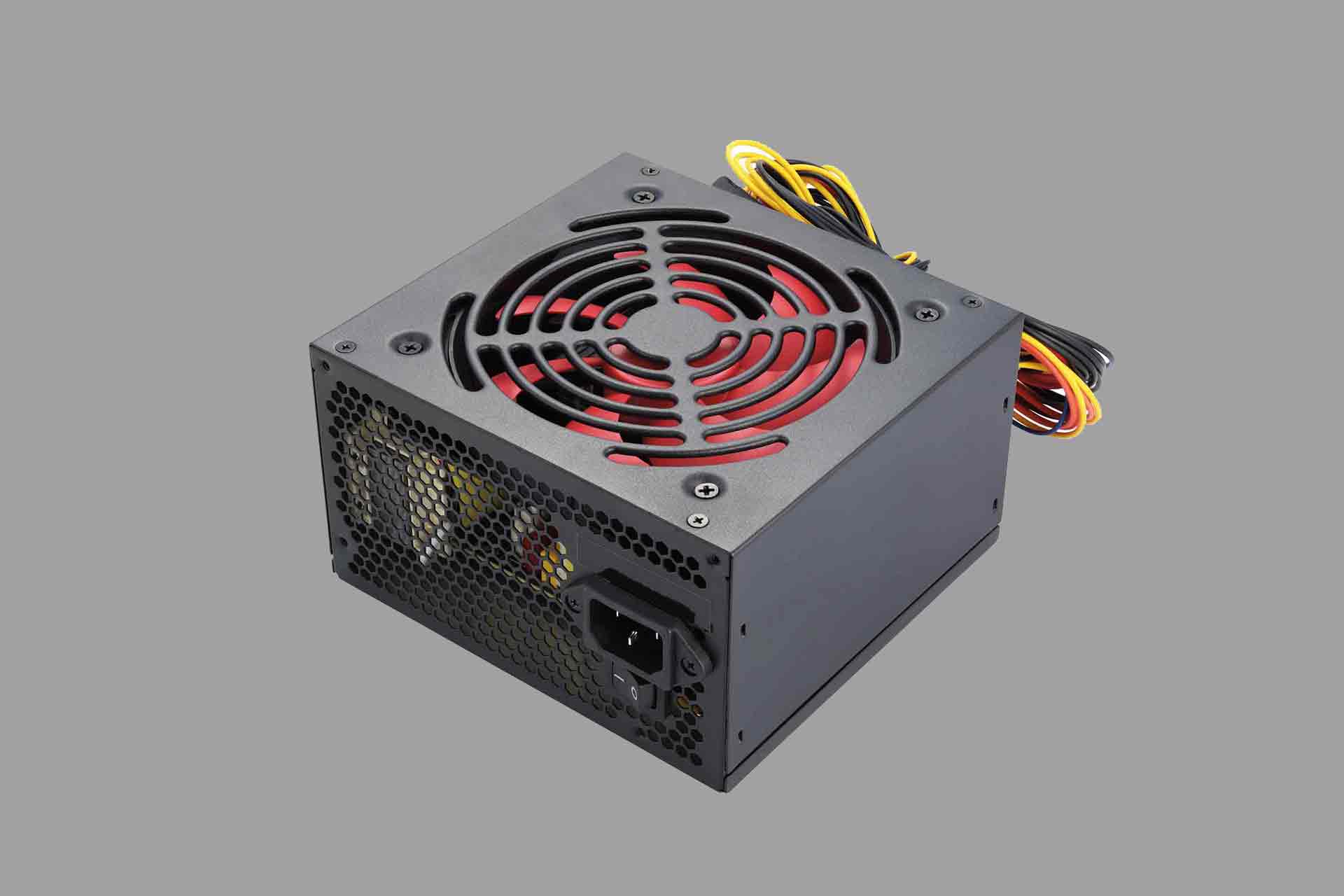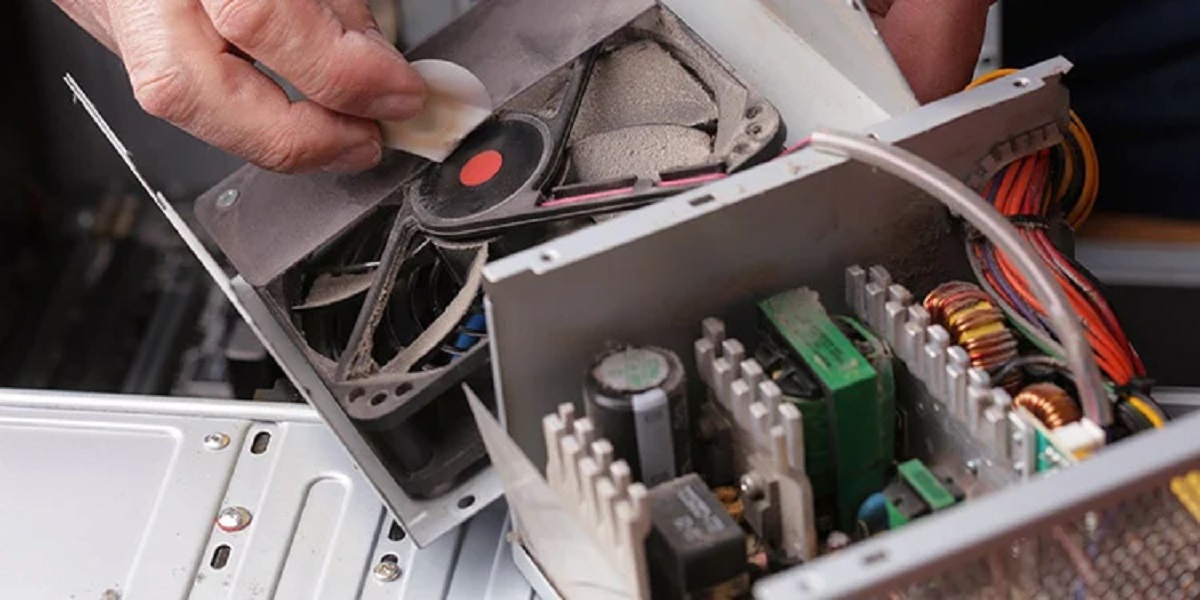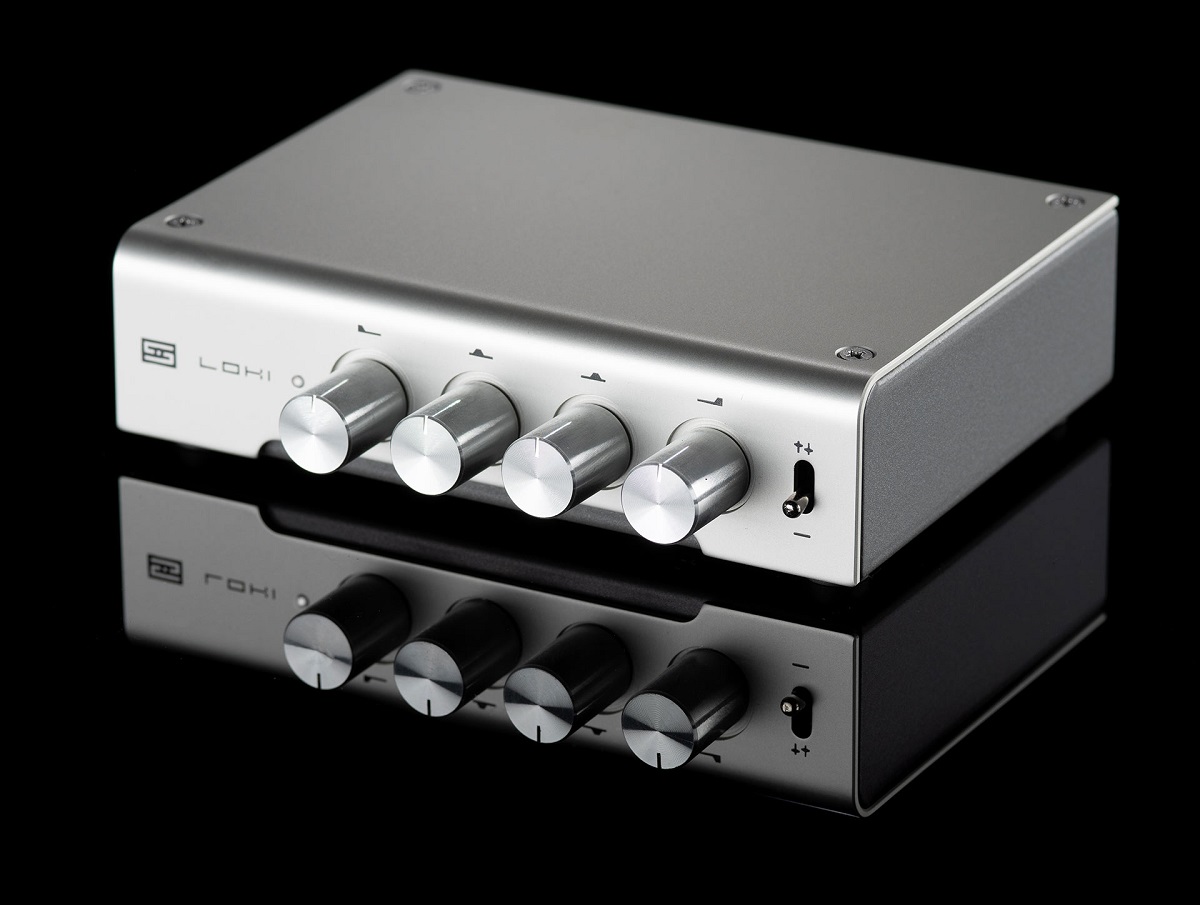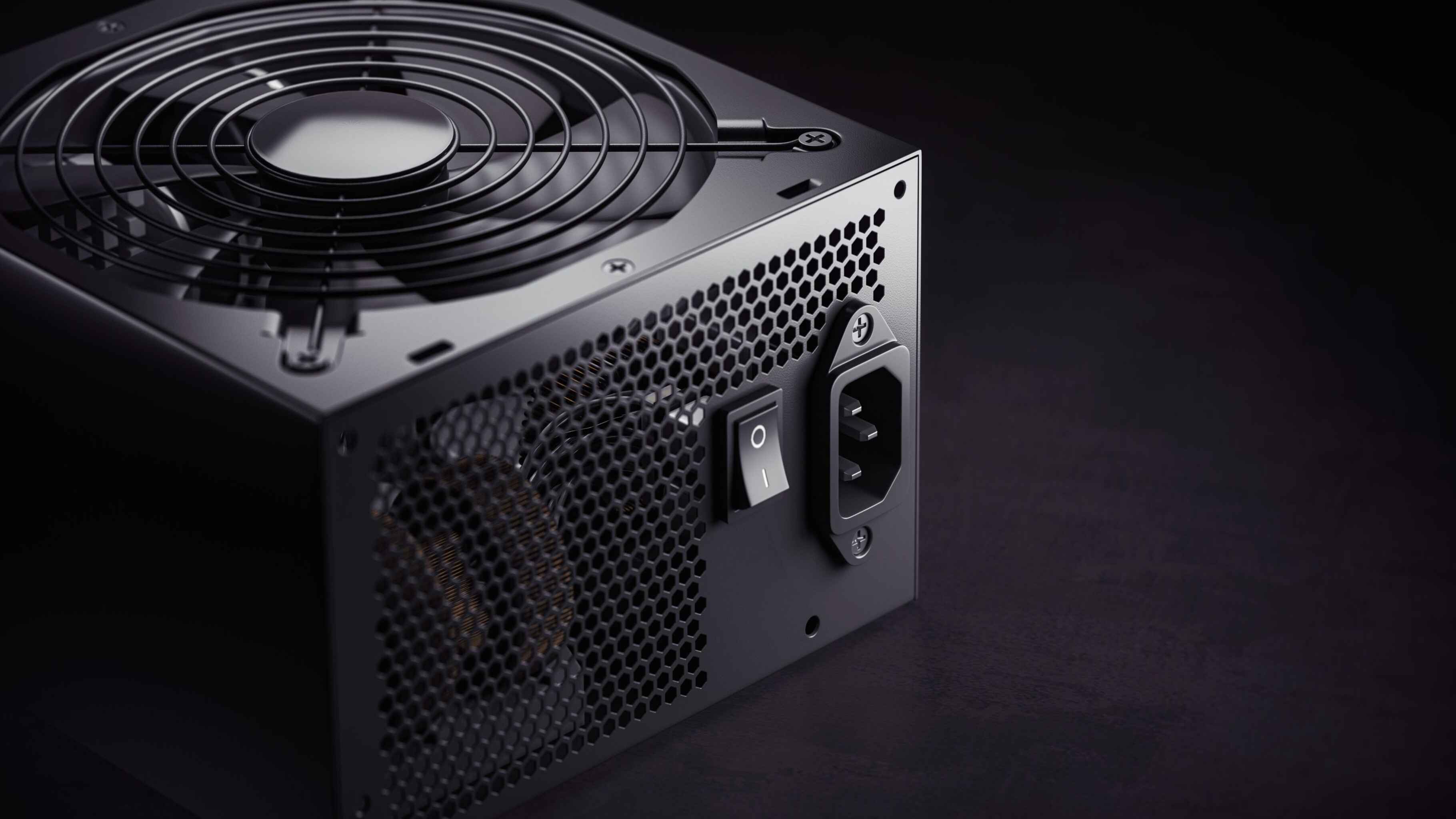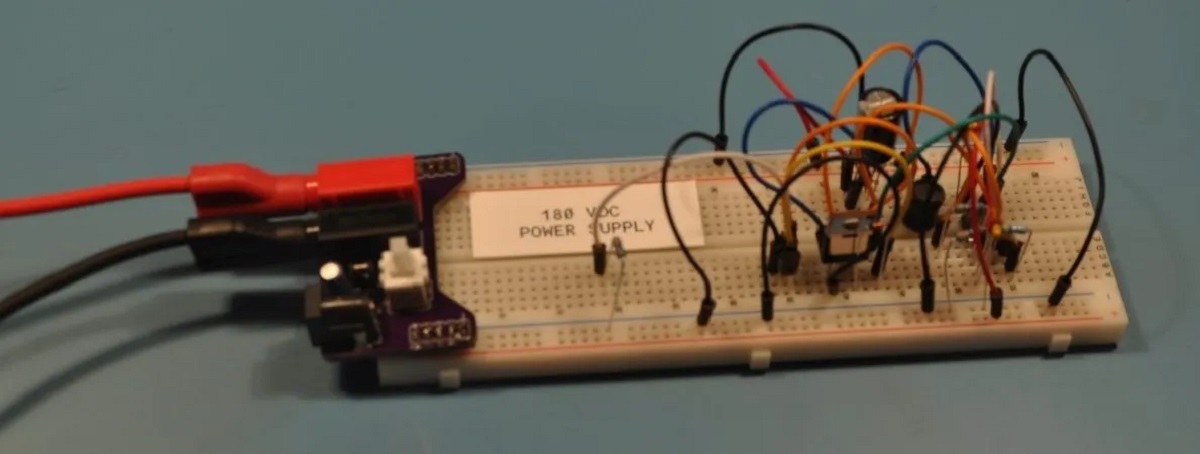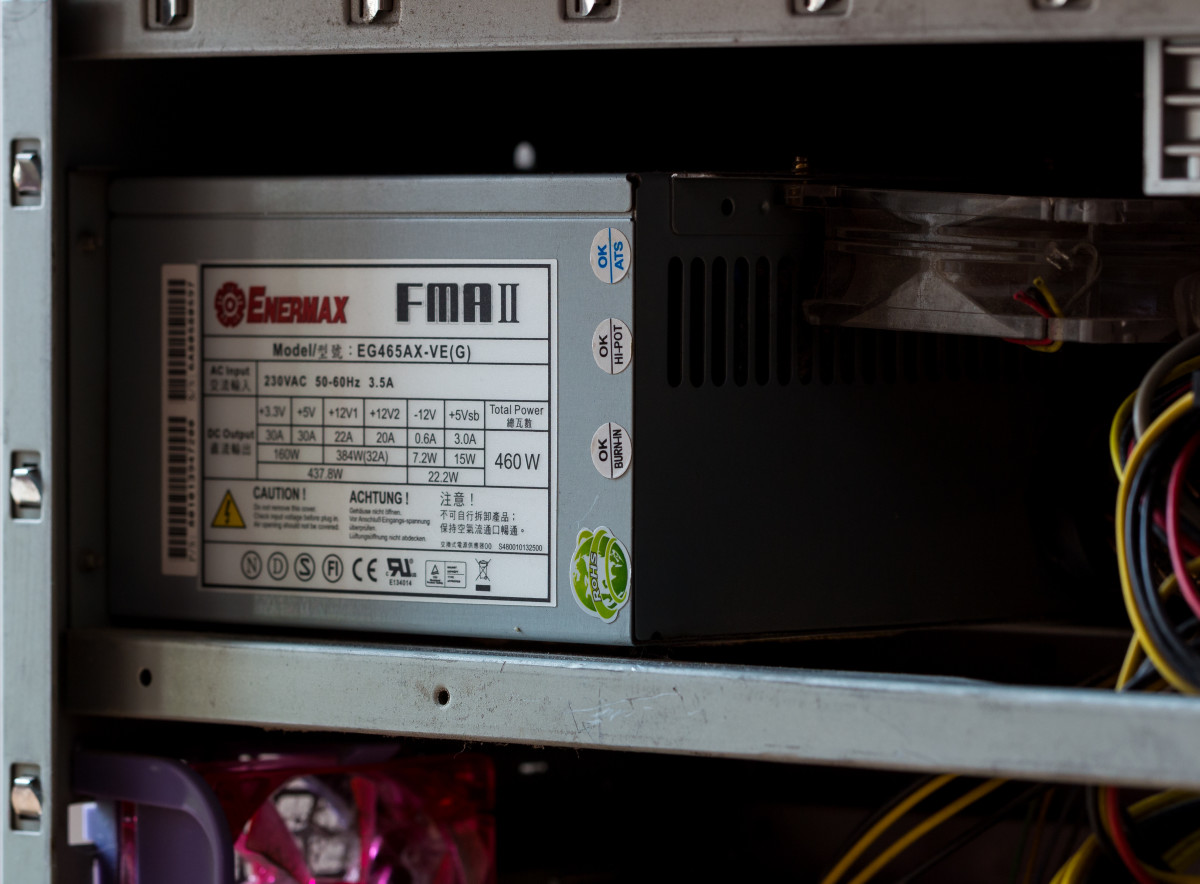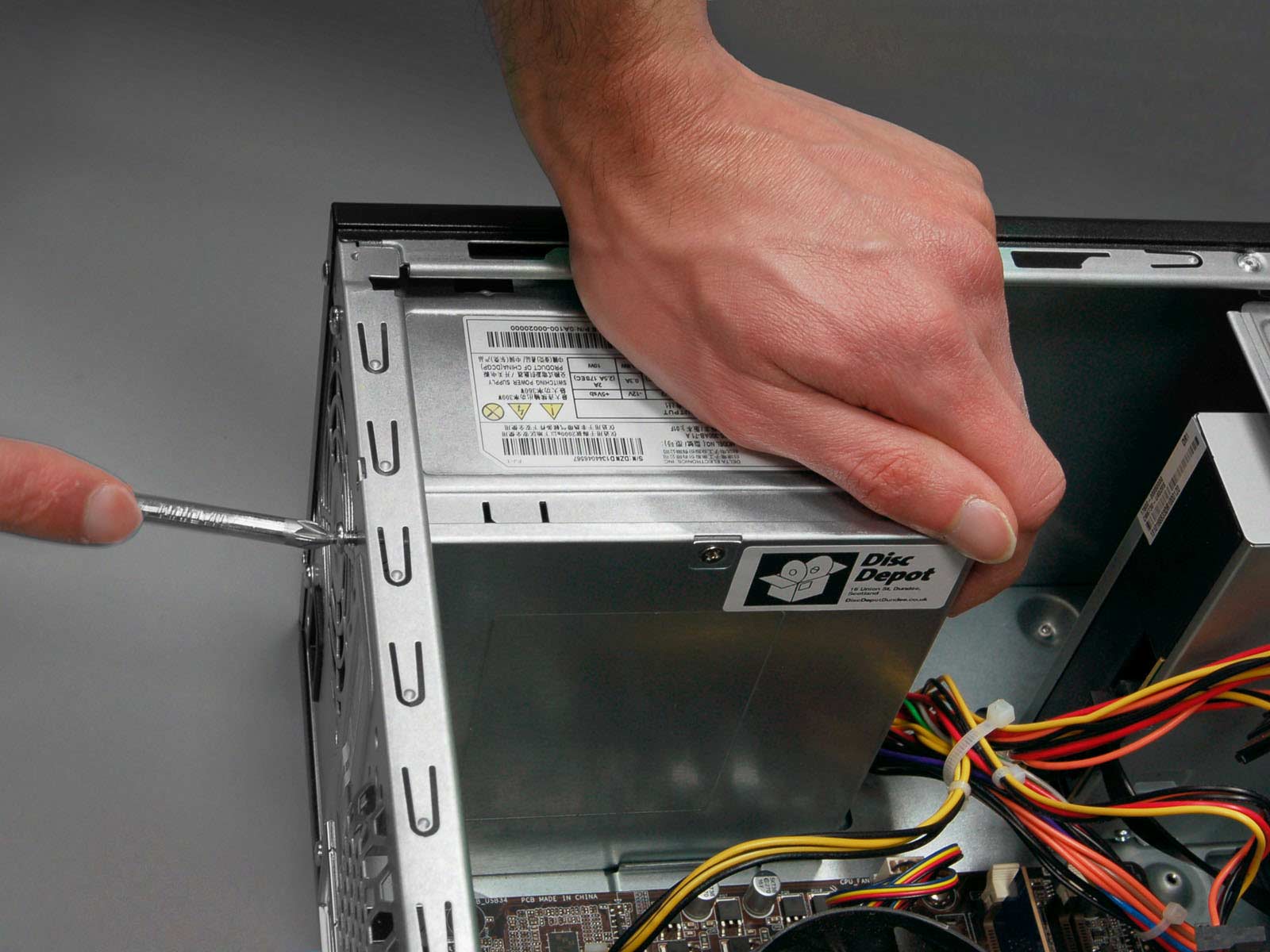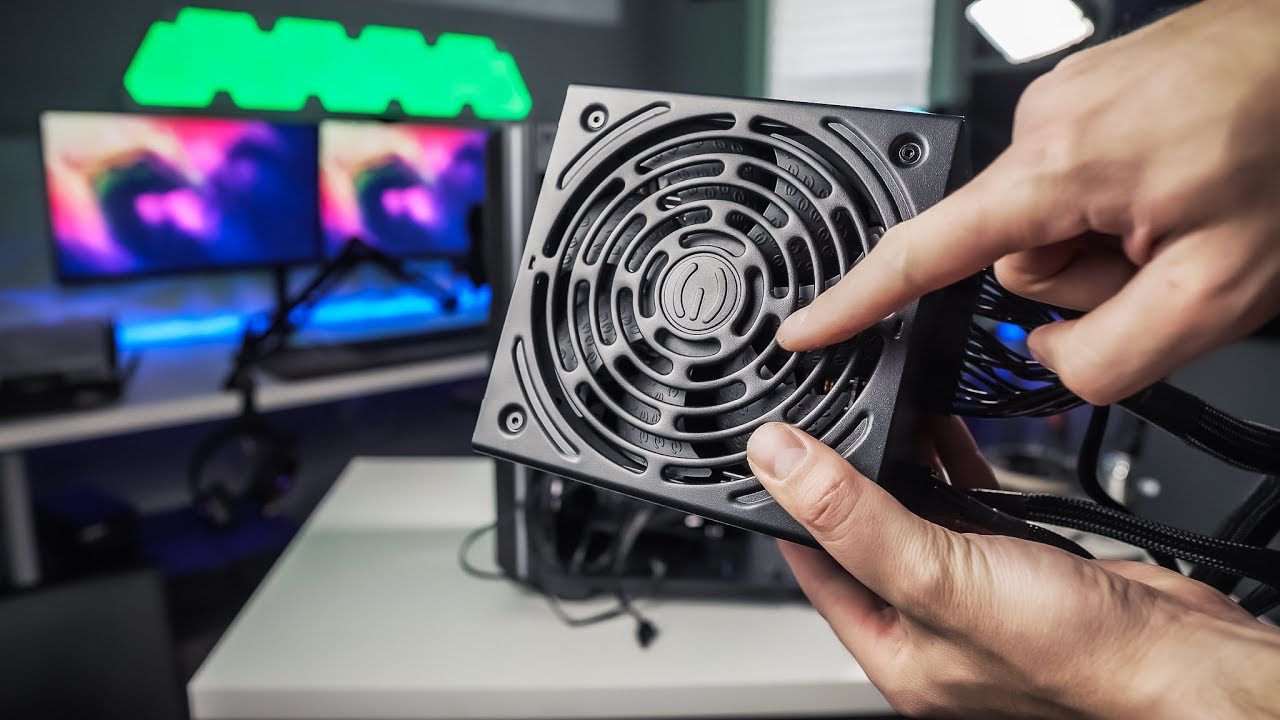Introduction
Welcome to our guide on power supply units! Whether you’re a tech enthusiast, gamer, or simply a computer user, understanding the importance of a power supply unit (PSU) is essential. In this article, we will explore the definition of a power supply unit, its significance, and various aspects related to it.
A power supply unit is an integral component of any electronic device that requires electricity to function, such as computers, gaming consoles, and home appliances. It serves as the primary source of electrical power, converting the incoming electrical current from the wall outlet into a form compatible with the device. Essentially, it provides a consistent and regulated power flow, ensuring the proper functioning of the connected components.
The importance of a power supply unit cannot be overstated. It plays a crucial role in safeguarding your electronic devices from power surges and fluctuations. Moreover, it ensures that each component within the system receives the necessary voltage and current, preventing any damage that may occur due to inadequate power supply.
Understanding the conversion of AC (alternating current) to DC (direct current) is fundamental to comprehending the functioning of a power supply unit. Most households receive AC power from the electrical grid, which oscillates in a sinusoidal wave pattern. However, electronic devices, such as computers and smartphones, require DC power to operate.
To bridge this gap, a power supply unit incorporates a rectifier circuit that converts AC power to DC power. The rectifier circuit can be built using diodes, which allow the flow of electrical current only in one direction. Once the conversion is complete, the DC power is then distributed to the various components of the device.
A power supply unit consists of several components that work together to deliver regulated power. These components include transformers, capacitors, voltage regulators, and various safety features like fuses and surge protectors. Each component plays a significant role in ensuring stable power delivery and protecting your devices from electrical hazards.
There are several types of power supply units available in the market, including ATX (Advanced Technology eXtended), SFX (Small Form Factor), and modular power supplies. The choice of a power supply unit depends on factors such as power requirements, form factor compatibility, and specific features to meet the needs of the device and its components.
However, selecting the right power supply unit can be a daunting task. Factors such as wattage, efficiency ratings, and connectivity options need to be considered. We will discuss these factors in detail later in the article to help you make an informed decision.
Despite their importance, power supply units can encounter common problems. Issues like overheating, power supply failures, or inadequate power output can disrupt the proper functioning of your device. We will address these issues and provide tips for maintaining a healthy power supply unit.
Now that we have introduced the basics of a power supply unit, let’s delve deeper into its various aspects to understand its significance and make informed decisions when purchasing and maintaining one.
Definition of a Power Supply Unit
A power supply unit (PSU), also commonly referred to as a power supply or power brick, is an essential component of electronic devices that require electricity to function. It is responsible for converting the incoming electrical current from the wall outlet into a form usable by the device.
The primary purpose of a power supply unit is to provide a consistent and regulated power flow to the connected components. It ensures that each component within the system receives the appropriate voltage and current, preventing any damage that may occur due to fluctuating or inadequate power supply.
Power supply units can be found in a variety of electronic devices, ranging from computers and gaming consoles to televisions and home appliances. Regardless of the device, the power supply unit is crucial for maintaining stable and reliable power delivery.
One of the key functions of a power supply unit is converting AC (alternating current) power from the electrical grid into DC (direct current) power. Most households receive AC power, which oscillates in a sinusoidal wave pattern. However, electronic devices typically require DC power to operate.
To achieve this conversion, power supply units incorporate a rectifier circuit. The rectifier circuit converts the AC power into DC power by utilizing diodes, which allow the flow of electrical current in only one direction. Once the conversion is complete, the DC power is distributed to the various components of the device.
In addition to converting AC to DC power, power supply units also regulate the voltage and current output. This is crucial, as different components within electronic devices have specific power requirements. By maintaining a stable power flow, the power supply unit ensures that the connected components receive the correct power levels, preventing potential damage or malfunction.
Furthermore, power supply units are designed to provide various levels of power output, measured in watts. The wattage of a power supply unit determines its capacity to deliver power to the connected devices. It is important to choose a power supply unit that can handle the power demands of the system to prevent overloading and potential damage to the components.
Overall, a power supply unit serves as the backbone of electronic devices, providing them with the necessary power to function properly. Its ability to convert, regulate, and deliver power efficiently ensures the smooth operation and longevity of the connected components.
Importance of a Power Supply Unit
The power supply unit (PSU) is a vital component in electronic devices, and its importance cannot be overstated. It serves multiple critical functions that are crucial for the proper functioning and longevity of the device.
One of the key roles of a power supply unit is to protect the device from power surges and fluctuations. Electrical grids can sometimes experience sudden voltage spikes or drops due to factors like lightning strikes, power outages, or problems with the power lines. These voltage irregularities can damage the delicate components within electronic devices.
A power supply unit acts as a buffer, stabilizing the voltage and protecting the device from potential harm. It regulates the incoming voltage to ensure a consistent and safe power delivery to the device’s components. This safeguarding feature is particularly important for expensive and sensitive electronics, such as computers, where even the slightest power fluctuation can cause irreversible damage.
Additionally, power supply units are designed to provide the necessary voltage and current to each component within the device. Different components have specific power requirements, and variations in power supply can lead to instability, system crashes, or component failures.
A well-functioning power supply unit ensures that all components receive the appropriate power levels, preventing potential damage or malfunction. It plays a crucial role in maintaining the stability and performance of the device, especially during tasks that require high power demands, such as gaming or graphics-intensive applications.
Another aspect of the importance of power supply units lies in their efficiency. Power supply units come with efficiency ratings, indicating how effectively they convert the incoming power into usable power for the device. High-efficiency power supply units not only save energy but also generate less heat during operation.
Reduced heat generation is valuable for maintaining the overall temperature of the device, preventing overheating and prolonging the lifespan of components. In contrast, inefficient power supply units can generate excess heat, putting a strain on components and potentially leading to premature failure.
Furthermore, power supply units serve as a central hub for connectivity options in some devices. They provide connections for peripherals, such as USB ports, audio jacks, and additional power connectors. This integration simplifies the cable management and helps in reducing clutter.
Overall, the importance of a power supply unit lies in its ability to deliver stable and regulated power to the connected components, protect the device from power fluctuations, and promote energy efficiency. Investing in a high-quality power supply unit is essential for ensuring the longevity, reliability, and optimal performance of your electronic devices.
AC/DC Power Conversion
AC/DC power conversion is a fundamental process that takes place within a power supply unit (PSU) to enable electronic devices to operate. It involves the transformation of the alternating current (AC) received from the electrical grid into the direct current (DC) required by most electronic devices.
Most households and commercial establishments receive electricity in the form of AC power. AC power flows in a sinusoidal waveform, constantly changing direction at a specific frequency, typically 50 or 60 hertz. However, electronic devices, including computers, smartphones, and gaming consoles, operate on DC power.
The process of AC/DC power conversion occurs within the power supply unit through a rectifier circuit. The rectifier circuit converts the AC power to DC power, ensuring a consistent and reliable power supply to the device’s components.
One of the common types of rectifier circuits used in power supply units is the full-wave bridge rectifier. It consists of four diodes that allow the flow of electrical current in one direction. When the AC input voltage is applied to the bridge rectifier, the diodes alternate in conducting current during two halves of the AC waveform, effectively rectifying the AC power into pulsating DC power.
The pulsating DC power generated by the bridge rectifier is then smoothed using filtering capacitors. These capacitors store electrical charge during the peaks of the pulsating waveform and release it during the troughs, resulting in a more stable and continuous DC output.
However, the output of the rectifier circuit is not yet the regulated DC power required by electronic devices. The next stage in the AC/DC power conversion process involves regulating and filtering the DC power to remove any residual ripple and fluctuations.
Power supply units utilize voltage regulators to ensure that the DC output remains within the required voltage range. Voltage regulators help maintain a steady voltage level by compensating for any variations in input voltage, load conditions, or environmental factors.
The regulated DC power is then distributed to the various components of the electronic device, providing the necessary voltage and current for their proper operation. Different components have specific power requirements, and the power supply unit ensures that each component receives the correct power levels.
In summary, AC/DC power conversion is a critical process that occurs within a power supply unit. It involves rectifying, smoothing, and regulating the incoming AC power to provide a stable and regulated DC power supply to electronic devices. This conversion ensures that the components receive the appropriate voltage and current, enabling the device to function reliably and efficiently.
Components of a Power Supply Unit
A power supply unit (PSU) consists of several components that work together to provide regulated and reliable power to electronic devices. Understanding the various components allows us to gain insight into how a power supply unit functions and how it ensures the smooth operation of connected devices.
1. Transformers: Transformers play a crucial role in the power supply unit by stepping up or stepping down the input voltage from the electrical outlet to the required voltage for the device. They help regulate and isolate the incoming power before it goes through the conversion and distribution process.
2. Rectifier Circuit: The rectifier circuit is responsible for converting the incoming alternating current (AC) from the electrical grid into direct current (DC) required by most electronic devices. It typically consists of diodes arranged in a specific configuration, such as a full-wave bridge rectifier or a half-wave rectifier.
3. Capacitors: Capacitors are used in the power supply unit to store and release electrical energy. They help smooth out any fluctuations or ripples in the DC output, ensuring a more stable and consistent power supply to the device’s components. Capacitors also help filter out any high-frequency noise present in the AC power source.
4. Voltage Regulators: Voltage regulators play a critical role in maintaining a steady and regulated DC output voltage. They compensate for any variations in input voltage, load conditions, or environmental factors, ensuring that the connected components receive the required voltage levels to operate efficiently and safely.
5. Safety Features: Power supply units incorporate several safety features to protect the device and the user from potential electrical hazards. These features may include fuses, which automatically break the circuit in case of excessive current flow, and surge protectors, which shield the device from power spikes and surges.
6. Cooling System: Power supply units generate heat during their operation, and to prevent overheating, they are equipped with cooling systems. This may include a combination of fans, heat sinks, and ventilation channels to dissipate heat and maintain an optimal operating temperature.
7. Connectors and Cables: Power supply units provide various connectors and cables to facilitate connections with the device and its components. This includes power connectors for the motherboard, peripherals, and graphics cards, as well as SATA connectors for storage devices.
Overall, the components within a power supply unit work together to ensure a stable, regulated, and safe power supply to electronic devices. The transformers, rectifier circuit, capacitors, voltage regulators, safety features, cooling system, and connectors play vital roles in maintaining the efficiency and reliability of the power supply unit.
Different Types of Power Supply Units
Power supply units (PSUs) come in various types and form factors, each designed to meet specific needs and compatibility requirements of different electronic devices. Understanding the different types of power supply units helps in selecting the right one for your device and ensuring proper power delivery. Here are some of the common types of power supply units:
1. ATX (Advanced Technology eXtended): ATX power supply units are widely used in desktop computers. They adhere to the ATX form factor and provide power to all the components of the computer system, including the motherboard, graphics card, and peripherals. ATX power supplies come in different wattage ratings and offer multiple connectors for various components.
2. SFX (Small Form Factor): SFX power supply units are specifically designed for compact and slim form factor cases. These power supplies are smaller in size compared to ATX units and are used in small desktop computers and Mini-ITX systems. SFX power supplies come with lower wattage ratings but provide enough power for efficient operation.
3. TFX (Thin Form Factor): TFX power supply units are similar to SFX units but have an even slimmer profile. They are commonly used in slim desktop computers and low-profile cases. TFX power supplies offer moderate wattage ratings and are suitable for systems with limited space constraints.
4. Modular Power Supply Units: Modular power supply units offer the advantage of customizable cable management. They come with detachable cables, allowing users to connect only the required cables to the components, reducing cable clutter and improving airflow within the system. Modular power supplies are available in various form factors, including ATX and SFX.
5. Redundant Power Supply Units: Redundant power supply units are often used in servers and high-end workstations that require continuous and uninterrupted power supply. These power supplies have dual or multiple power modules, allowing one module to take over if another fails, ensuring system reliability and minimizing downtime.
6. External Power Adapters: External power adapters, also known as power bricks or AC adapters, are separate power supply units that are used to power devices like laptops, monitors, and other peripheral devices. They convert AC power from the wall outlet to DC power suitable for the specific device.
When selecting a power supply unit, it is important to consider factors such as wattage requirements, form factor compatibility, and the specific power needs of the device and its components. It is recommended to choose a power supply unit that provides sufficient power with high efficiency to ensure stable and reliable operation.
Understanding the different types of power supply units allows you to make an informed decision based on the requirements of your device and the available form factors and features in the market.
Factors to Consider when Choosing a Power Supply Unit
Choosing the right power supply unit (PSU) for your electronic device is crucial to ensure proper power delivery and system stability. Several factors should be considered when selecting a power supply unit to meet your specific requirements. Here are some key factors to consider:
1. Wattage: The wattage of a power supply unit indicates its capacity to deliver power to the components. It is important to choose a power supply unit that has sufficient wattage to meet the power demands of your system. Consider the power requirements of the CPU, graphics card, and other components in your device when determining the appropriate wattage.
2. Efficiency Rating: Power supply units come with efficiency ratings, typically indicated as 80 Plus certifications (e.g., 80 Plus Bronze, Silver, Gold, Platinum, Titanium). Higher-efficiency power supplies convert more of the AC power into usable DC power, resulting in less wasted energy as heat. Opting for a power supply unit with a higher efficiency rating can lead to lower electricity costs and reduced heat generation.
3. Form Factor and Compatibility: Ensure that the power supply unit is compatible with the form factor of your device. Different devices and cases have specific form factors, such as ATX, SFX, or TFX. Choosing a power supply unit that matches the form factor requirements of your device ensures a proper fit and compatibility.
4. Connectors and Cable Configuration: Check the available connectors and cables provided by the power supply unit. Ensure that it has the appropriate connectors to power all the necessary components in your device, including the motherboard, graphics card, storage drives, and peripherals. Modular power supply units offer the advantage of customizable cable management, allowing you to connect only the required cables, reducing clutter within the system.
5. Quality and Reliability: Look for power supply units from reputable brands known for their quality and reliability. A reliable power supply unit is essential to prevent power disruptions, voltage fluctuations, or component damage. Read reviews, check customer ratings, and choose a power supply unit from a trusted manufacturer to ensure long-term reliability.
6. Additional Features and Protections: Consider the additional features and protections offered by the power supply unit. Look for features such as over-voltage protection, under-voltage protection, short-circuit protection, and over-temperature protection. These safeguards help protect your device and its components from potential electrical hazards and ensure system stability.
7. Budget: Set a budget for your power supply unit while considering the required specifications and features. While it is important to invest in a reliable and high-quality power supply unit, it is also necessary to strike a balance between your budget and the performance requirements of your device.
By considering these factors when choosing a power supply unit, you can ensure that your device receives the appropriate power, resulting in stable operation, efficiency, and longevity.
Common Problems with Power Supply Units
Power supply units (PSUs) can encounter various problems that can disrupt the proper functioning of electronic devices. Understanding these common issues helps in troubleshooting and addressing them effectively. Here are some of the common problems that may occur with power supply units:
1. Power Supply Failure: Power supply units can fail due to various reasons, such as component degradation, overheating, electrical surges, or manufacturing defects. A power supply failure can result in a complete loss of power or unstable power delivery, leading to system crashes or device malfunctions.
2. Insufficient Power Output: Using a power supply unit with insufficient wattage can lead to power delivery issues. Inadequate power output can cause system instability, random shutdowns, or an inability to power all the components properly. It is important to choose a power supply unit that meets the power requirements of your device and its components.
3. Overheating: Power supply units generate heat during their operation. If not properly cooled, the heat can build up and cause overheating. Overheating can lead to system instability, reduced lifespan of components, and potential power supply unit failures. Ensuring proper ventilation, cleaning any dust accumulations, and using efficient cooling solutions can help prevent overheating issues.
4. Power Surges and Fluctuations: Power surges and fluctuations can occur due to lightning strikes, power grid issues, or faulty electrical wiring. These sudden spikes or drops in voltage can potentially damage the power supply unit and the connected components. Using surge protectors or uninterruptible power supply (UPS) units can provide protection against these power fluctuations.
5. Noise or Coil Whine: Some power supply units may produce audible noise or coil whine, typically caused by the internal components or electrical conversion processes. While this doesn’t necessarily indicate a malfunction, it can be bothersome to some users. Choosing power supply units from reputable brands known for their quiet operation can help minimize this issue.
6. Cable Management and Clutter: Poor cable management in power supply units can lead to cable clutter, which can impede proper airflow within the system. The presence of tangled cables near the power supply unit can also increase the risk of accidental disconnections or damage to the cables. Ensuring proper cable management and using modular power supply units can help maintain a clean and organized setup.
7. Compatibility Issues: Compatibility issues may arise when installing a power supply unit in a device with specific form factor requirements. It is important to ensure that the power supply unit matches the form factor of the device and that all the necessary connectors are compatible. Failure to do so can result in improper installation, power supply unit failure, or damage to the device.
When encountering any problems with a power supply unit, it is recommended to consult the manufacturer’s guidelines, seek professional assistance, or replace the power supply unit if necessary. Regularly maintaining and monitoring the power supply unit can help prevent and address these common issues, ensuring the stable and reliable operation of your electronic devices.
Tips for Maintaining a Power Supply Unit
Maintaining a power supply unit (PSU) is essential to ensure its longevity, optimal performance, and the overall health of your electronic devices. By following these maintenance tips, you can prolong the lifespan of your power supply unit and prevent potential issues:
1. Keep it Clean: Regularly clean the power supply unit to prevent dust buildup and improve airflow. Use compressed air to blow out any dust or debris that may have accumulated on the intake and exhaust vents. Ensuring proper ventilation helps keep the internal components cool and reduces the risk of overheating.
2. Avoid Overloading: Do not overload your power supply unit by connecting devices that exceed its power capacity. Always check the power requirements of your devices and ensure that the total power draw does not surpass the wattage rating of the power supply unit. Overloading the power supply unit can cause system instability, random shutdowns, or potential damage to the components.
3. Use Surge Protectors or UPS: Protect your power supply unit and connected devices from power surges and fluctuations by using surge protectors or uninterrupted power supply (UPS) units. These devices help absorb and redirect excessive voltage spikes, safeguarding the power supply unit and preventing damage to the connected components.
4. Ensure Proper Ventilation: Adequate ventilation is crucial for maintaining an optimal operating temperature for the power supply unit. Make sure that the power supply unit is not obstructed by objects, and there is enough space around it for proper airflow. Avoid placing the power supply unit in enclosed spaces or near sources of heat, as this can lead to overheating.
5. Check and Secure Connections: Regularly inspect the connections between the power supply unit and the components in your device. Ensure that all cables are securely plugged in and that there are no loose connections. Loose connections can cause power delivery issues and potentially damage the power supply unit or the connected components.
6. Monitor Voltage and Temperature: Keep an eye on the voltage levels and temperature of your power supply unit. Monitoring tools or software can help you track the voltages and temperatures within your system. Abnormal voltage fluctuations or excessive temperatures could indicate potential issues with the power supply unit or other components, requiring further investigation or maintenance.
7. Replace Aging or Faulty PSUs: If you notice any signs of power supply unit failure, such as random shutdowns, power delivery issues, or unusual noises, it may be time to replace the power supply unit. Aging or faulty power supply units can pose risks to your devices and compromise their performance. It is recommended to replace the power supply unit with a new one from a reputable brand.
Following these maintenance tips will help ensure the proper functioning and longevity of your power supply unit. Taking care of your power supply unit contributes to the overall stability and reliability of your electronic devices, reducing the risk of power-related problems and prolonging their lifespan.
Conclusion
A power supply unit (PSU) is a critical component of electronic devices, providing the necessary regulated power for their operation. Understanding the function, types, and maintenance of power supply units is essential for ensuring the proper functioning, stability, and longevity of your electronic devices.
We have explored the definition of a power supply unit, its importance in delivering consistent and regulated power, and the process of AC/DC power conversion. The components within a power supply unit, such as transformers, rectifier circuits, capacitors, voltage regulators, and safety features, work together to provide reliable power to your devices.
Choosing the right power supply unit involves considering factors such as wattage, efficiency rating, compatibility, connectors, and additional protections. Selecting a power supply unit that meets the power requirements of your components and offers the necessary features ensures optimal performance and stability.
Common problems that may occur with power supply units include power supply failure, insufficient power output, overheating, power surges, and compatibility issues. By being aware of these issues, you can troubleshoot and take appropriate measures to address and prevent them.
Maintaining your power supply unit through regular cleaning, proper ventilation, avoiding overloading, using surge protectors or UPS units, and monitoring voltage and temperature helps in ensuring its longevity and the reliability of your devices.
In conclusion, understanding the importance, working principles, types, and maintenance of power supply units empowers you to make informed decisions and take proactive measures to ensure the efficient and safe operation of your electronic devices. By investing in a reliable power supply unit and following proper maintenance practices, you can significantly enhance the lifespan and performance of your electronic devices.







